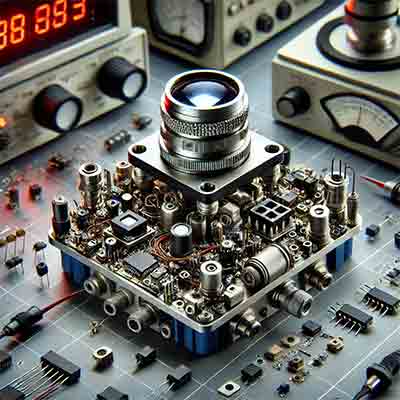Sapphire Used for MOVPE Growth of GaN
A Integrated Systems and Device technology researcher requested the following quote.
We are looking for epi-ready (one-side polished) r-plane 10mmx10mm (square size) sapphire wafer pieces (quantity 10 nos.) for the MOVPE growth of Gallium Nitride. The thickness should be around 400um.
Would you please send us a quotation with the following information?
Reference #102179 for specs and pricing.
Get Your Silicon Wafer Quote FAST! Or, Buy Online and Start Researching Today!
What is MOVPE?
MOVPE stands for Metal-Organic Vapor Phase Epitaxy, a method used in semiconductor fabrication to grow crystalline layers to create complex semiconductor multilayer structures. Here's a breakdown of the process:
-
Materials: The primary materials used are metal-organic compounds and  hydrides. Common sources include trimethylgallium (TMGa) and arsine (AsH3) for growing Gallium Arsenide (GaAs).
hydrides. Common sources include trimethylgallium (TMGa) and arsine (AsH3) for growing Gallium Arsenide (GaAs).
-
Process:
- Vapor Phase: The metal-organic compounds are vaporized and transported to the reaction chamber.
- Epitaxy: The gases react and decompose on a heated substrate, forming a thin crystalline layer.
-
Environment: The process takes place in a controlled environment to ensure high purity and precision.
-
Applications: MOVPE is used in the production of LEDs, laser diodes, solar cells, and high-speed electronic devices.
Advantages
- Precision: Allows for precise control over layer thickness and composition.
- Quality: Produces high-quality, defect-free crystals.
- Versatility: Can be used to grow a wide range of semiconductor materials.
Disadvantages
- Cost: The equipment and materials can be expensive.
- Complexity: Requires careful control of many variables.
MOVPE is crucial for modern semiconductor device fabrication due to its ability to create highly controlled and high-quality layers necessary for advanced electronics.
Substrates Used for MOVPE
The most often used substrates for MOVPE (Metal-Organic Vapor Phase Epitaxy) vary depending on the materials being grown and the intended applications. Here are some of the most common substrates:
-
Silicon (Si):
- Widely used due to its availability and well-understood properties.
- Common for growing silicon-based compounds and integrating optoelectronic devices with traditional silicon electronics.
-
Gallium Arsenide (GaAs):
- Commonly used for III-V compound semiconductors.
- Suitable for high-speed and optoelectronic devices, including LEDs, laser diodes, and high-frequency transistors.
-
Sapphire (Al2O3):
- Often used for growing Gallium Nitride (GaN) layers.
- Ideal for blue and ultraviolet LEDs and laser diodes due to its lattice matching properties with GaN.
-
Indium Phosphide (InP):
- Used for high-speed and optoelectronic devices.
- Suitable for telecommunications applications due to its excellent electron mobility and direct bandgap properties.
-
Silicon Carbide (SiC):
- Used for high-power and high-temperature applications.
- Suitable for growing GaN layers for power electronics and RF applications.
-
Germanium (Ge):
- Sometimes used as a substrate for III-V materials.
- Suitable for optoelectronic applications due to its lattice matching with certain III-V compounds.
-
Quartz (SiO2):
- Used for specific applications where insulating properties are required.
- Suitable for certain types of optoelectronic devices.
The choice of substrate depends on the lattice matching, thermal expansion properties, and intended application of the grown material. Each substrate offers unique advantages and is selected based on the specific requirements of the epitaxial growth process and the final device performance.

 hydrides. Common sources include trimethylgallium (TMGa) and arsine (AsH3) for growing
hydrides. Common sources include trimethylgallium (TMGa) and arsine (AsH3) for growing